Why grass now costs more than sheep on China’s vast Inner Mongolian prairie
Devastating drought leaves herders struggling to find enough feed to keep livestock alive through winter

Gazing at the thin grass barely covering the soil on what was once one of China’s lushest prairies, Mongolian herder Lingjae, 54, was not optimistic she would get a good price for her sheep.
She was anxiously waiting for offers from two livestock dealers on an unusually warm late-September day on the Hulunbuir grasslands in the north of Inner Mongolia, bordering Mongolia and Russia.
“The dealers are not satisfied: one sheep is crippled, several others are too lean,” she said, sighing.
Over the summer, the Hulunbuir grasslands, a popular tourist destination, were hit by the worst drought in decades, with little rain for more than two months and temperatures hitting a record high in August.
The extreme drought pushed up the price of grass and caused livestock prices to plunge. That’s left herders facing hefty economic losses and even led to a violent confrontation in August between two groups contesting access to a piece of not-so-barren pasture.
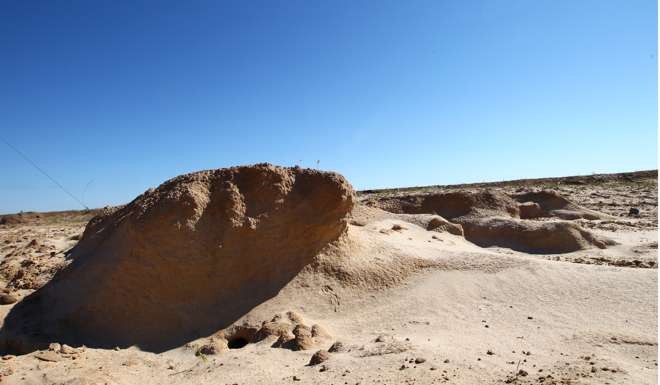
Now, with winter fast approaching, many herders, some already heavily indebted, are feeling helpless. The drought has led to a greatly reduced hay harvest, leaving their sheep and cattle with insufficient feed for winter, when the grasslands will be covered by snow.
The suffering of the herders is a reminder that people on the ground are the most vulnerable to increasingly frequent extreme weather events – floods, typhoons and droughts – related to climate change.
Last month, Beijing joined Washington in ratifying the Paris Agreement, a landmark deal reached last year to limit global warming to within 2 degrees Celsius of pre-industrial levels, but the central government’s efforts to help people cope with climate challenges have fallen far short of what is required.
At same time, extreme weather events are worsening in China, taking a heavy toll on property and even lives. The Yangtze River experienced its worst flooding since 1998 this year and typhoons and flooding have caused hundreds of deaths so far this year.
A 14-century-old ballad praised the heartland of the Mongolian grasslands, where Genghis Khan later raised his horde, as a place where “between the vast sky and the boundless earth, flocks and herds appear as grass bends to wind”.
But on a recent visit, it made for a depressing sight. Locals say that even in a good year, with abundant rain, the grass grows barely high enough to cover their ankles. A few decades ago it would reach up to their thighs when they were on horseback
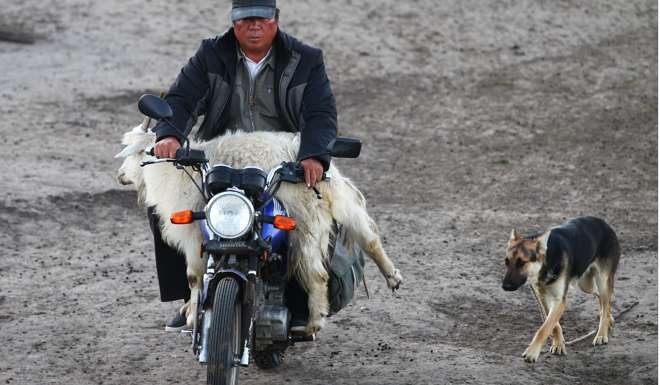
Climate change, overgrazing and pollution from mines and factories have led to severe degradation of the grasslands – and even desertification some places – over the past two decades, pushing the once lush Mongolian areas to the brink of an ecological crisis.
The meteorological station in Hulunbuir says the average temperature in the area has risen by 0.55 degrees a decade over the past 50 years, increasing the severity of droughts on the steppe.
Lingjae and several other herders said this year’s drought was “the worst in memory”.
Between July and August, New Barag Left Banner, a county-level administrative division under the city of Hulunbuir, and neighbouring New Barag Right Banner, where Lingjae lives, received between 16mm and 33mm of rain – just a fifth of what they expected – while temperatures were nearly 4 degrees above normal, turning the “prairie kingdom” into a yellowish, barren land.
The right banner recorded its highest ever temperature, 44.1 degrees, in August, according to the Ministry of Water Resources.
Small rivers and creeks dried up and herdsmen had to drill emergency wells to get water for their livestock.
In August, herdsmen from the left banner village of Bayingong Gacha roved 100km from home to graze their sheep on relatively luxuriant pasture, only to find another group of herders already there, 30-year-old villager Narentuya said.
The dispute over which group had the right to graze there escalated into a violent stand-off that lasted for three days before being ended by local government intervention.
Two villagers from Bayingong Gacha were injured and dozens of sheep were killed, she said, showing photos of the fight that were widely circulated among local herders.
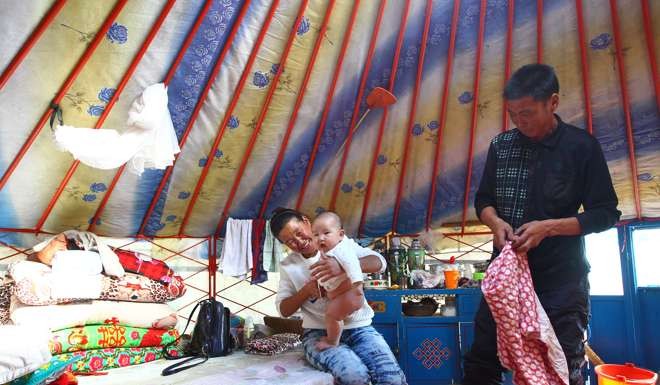
“If not for the drought, they did not have to go,” she said, breastfeeding her four-month-old baby in a dilapidated yurt.
Her husband was not among the group involved in the confrontation. Instead, he had travelled more than 50km to harvest grass from another pasture. But they still have not stored enough to last through the winter.
Narentuya is nostalgic for the days of her childhood, when the grass easily grew more than half a metre tall and people did not keep so many sheep and cattle.
“At that time the grass easily enveloped your feet and thighs when you rode on a horse,” she said.
She said the degradation of the grasslands began when each herding family was allocated a plot of land and told to settle down in 1997, part of the government programme to resettle thousands of pastoral nomads with the promise of better infrastructure and public services.
Narentuya now lives in two yurts built near a major road with her husband, father-in-law and two sons. But she said she’d prefer a nomadic existence if allowed.
While the government blames nomads for grassland degradation, she said grazing on fixed pasture gave grass less of a chance to recover.
“Now grass grows only to 20 to 30cm, even where sheep and cattle are not grazed,” she said.
A woman working for a state-owned forest farm in the left banner said the extension of road networks and power grids had made it much easier for herders to move around and had attracted outsiders grazing much larger herds, creating new challenges for local governments.
They were ignoring restrictions and grazing their livestock on state-owned grasslands between protected forests, she said, angering local herders who were barred from such areas and threatening to become a source of social instability.
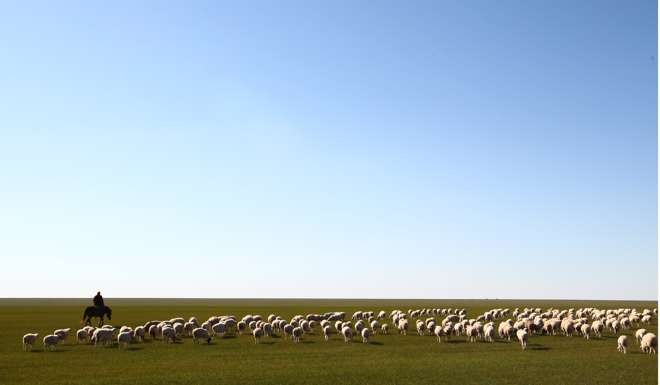
Their presence also challenged the implementation of the government’s plan to curb grassland degradation by striking “a balance between grassland capacity and livestock populations”.
A research paper published two years ago said nearly 40 per cent of the 100,000 sq km Hulunbuir grasslands were suffering from various degrees of degradation, desertification and salinity.
And the situation is worsening rapidly, with estimates that another 2 per cent is degraded each year, meaning the once lush prairie could turn into a desert if the trend continued.
Power plants, chemical factories, coal mines and others producing gold, copper or molybdenum are using up groundwater and drying up rivers and creeks which previously replenished the wetlands which nourish the Mongolian grasslands.
In some areas of the two banners, sand dunes are already eating into the grasslands, while dried-up ponds expose saline lake-bed soils.
The intertwined impacts of climate change and environmental pollution are not only putting the fragile ecosystem under stress, they are also testing the ability of China’s government to react, according to Li Shuo, senior global policy adviser at Greenpeace East Asia.
“For years, mitigation [of greenhouse gas emissions] has been the poster child of China’s reaction to climate change, leaving adaptation the untended sibling of this interconnected twin problem,” Li said.
By late September, Lingjae had already sold more than 600 sheep from her original flock of about 1,000 and was planning to sell another 92, hoping to get enough money to pay for the grass the remaining 300 would need to get through winter.
“It may still not be enough, grass is more expensive than sheep now,” she said.
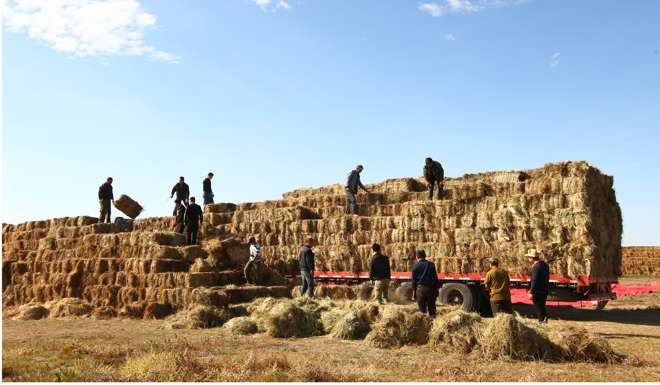
Sheep prices have more than halved as grass prices have doubled, with Lingjae facing the prospect of having to sell two sheep to be able to afford keeping a third through the five-month-long winter.
Official news reports say local governments have mobilised to provide emergency hay supplies to herdsmen, and a visit to a storehouse in New Barag Right Banner by the South China Morning Post found workers stacking hay bales transported from as far away as Heilongjiang province.
One of them said teh government would sell the hay to local herders and provide subsidies so they could afford it. But about a dozen herders interviewed by the Post in the two banners said they had not been officially informed about the subsidies.
Li said their suffering showed the government had not been paying sufficient attention to the need to adapt to the effects of climate change.
Instead of seeing droughts and torrential downpours as one-off, individual weather events, comprehensive policy measures were needed to effectively cope with the damage they caused.
“Makeshift solutions may fix temporary problems, but will certainly fall short in the face of a challenge as fundamental and enduring as climate change,” he said.